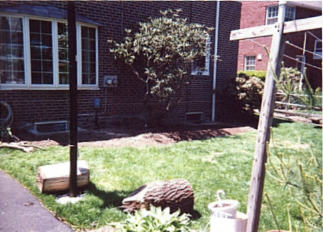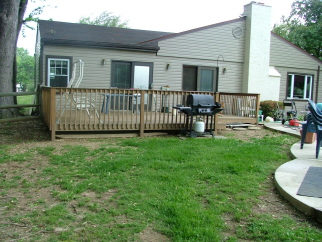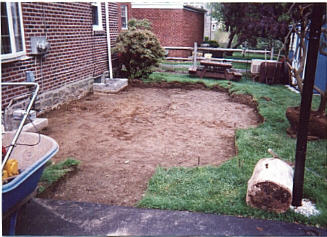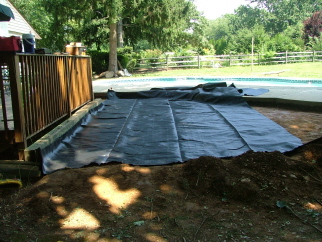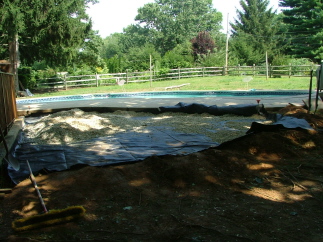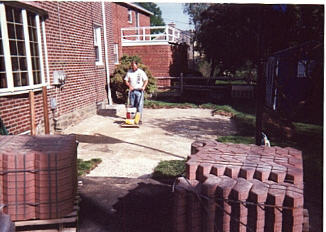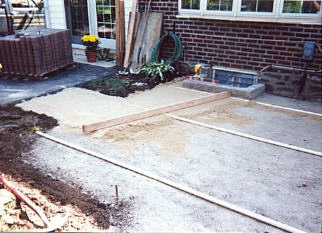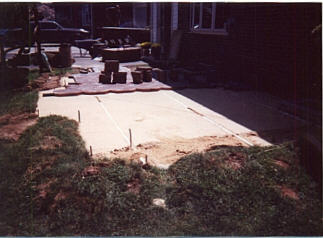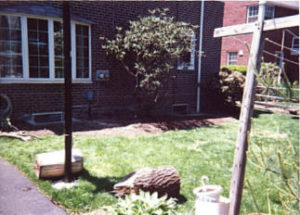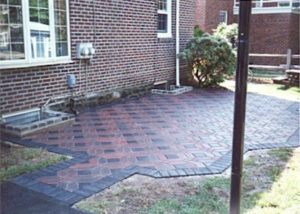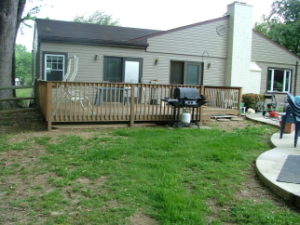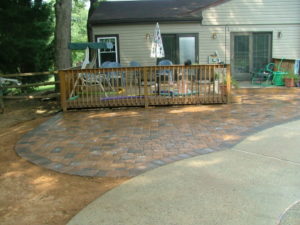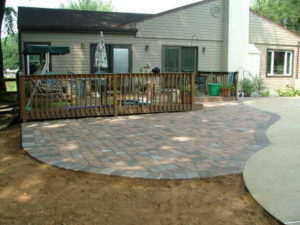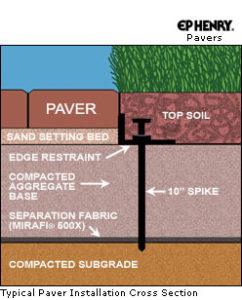This page is here to illustrate how we construct our patios and walks, and should not be used as a how-to guide for patio or walk construction.
- Many variables can affect how a patio or walk performs such as soil type, depth of excavation, subsoil compaction, use of stabilization fabric, depth and compaction of modified stone base, depth of bedding sand, and use of paver edging and joint sand.
- We specializing in small to medium-sized patios constructed with Flagstone or Bluestone, E.P. Henry or other brands of interlocking pavers, and Clay Paving Brick.
- Patios and walks are blended into existing grade with a minimum of disturbance to surrounding lawns and gardens, and the proper pitch (approximately 1½% to 2% grade) set to appear level and still drain water away from the house.
Shown below are best practices we use to construct a good patio or walk as taught by the ICPI. Scroll down this page to view details and pictures of each step of construction.
Patio & Walk Installation and Construction
Construction is shown using pictures of two different patios. Before construction, existing levels are checked, and the level for the patio or walk is determined. Attention has to be paid to the level of the floor inside the house, window wells, dryer vents, water outlets, utility meters and any vents or obstructions in the area of the new patio or walk. Patios are pitched slightly away from the house (approximately 1½% to 2% grade) set to appear level and still drain water away from the house. A call is made to PA One Call to determine if there are underground utilities in the excavation area.
- Before Construction Symetry Venetian Parquet Patio Autumn Blend with Charcoal border:
- Before Construction Old Towne Cobble Patio Harvest Blend with Dakota Blend Border:
Lines are set up at the level of the new patio or walk. We now excavate soil 9-inches below the final level for patios and walks, soil is excavated at least 6-inches outside of the area to be paved, and the subsoil is compacted. Stabilization fabric is installed over the subsoil.
- Setup Lines and Excavate:
- Compact soil and install stabilization fabric:
Install 6-inches of modified stone over fabric in two lifts or levels, and compact each level.
- Install modified stone over fabric:
- Tamp Modified Stone Based:
Set pipes to proper level for sand. Screed sand and install pavers.
- Installing the Sand Bed at the Proper Level:
- Installing Pavers:
Edge pavers with paver restraint, tamp pavers with plate compactor, sweep sand into joints, (we now use special joint sand with polymeric stabilizer to harden joints, and help prevent weeds and ant damage). Patio or walk with sand now in the joints is tamped again and sand is swept in again and then cleaned off of patio. Pavers are moistened to harden the polymeric joint sand. Soil is graded along outside of the patio or walk. Compaction equipment is not used on top of flagstone patios because it may break under heavy compaction; compaction is done on the base below the flagstone.
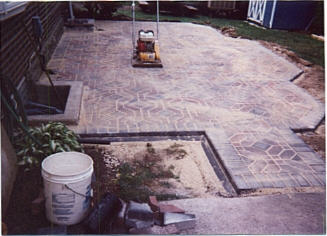
Edge, Sweep Sand & Tamp
Before & After Symetry Venetian Parquet Patio Autumn Blend with Charcoal border. – Havertown, Delaware County, PA 19083
- Before:
- The Finished Patio:
Old Towne Cobble Patio 80% Harvest Blend with 20% Dakota Blend and Dakota Blend Border.- Media, Delaware, County, PA 19063
- Before:
- The Finished Patio shown here wet to bring out colors:
- The Finished Patio shown here dry:
- Construction detail from the E.P. Henry Website

